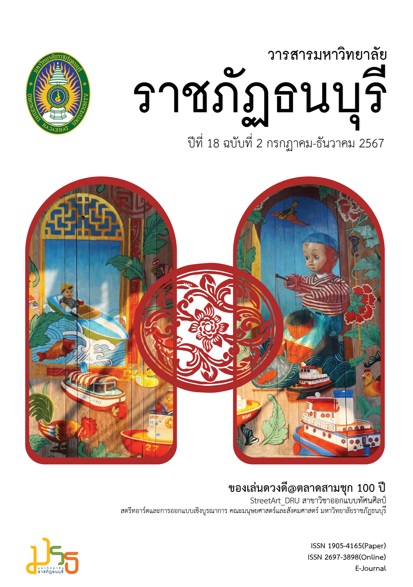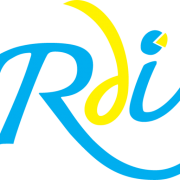The Evaluation of the 3 Good Experience Model for Young Children With Community Participation in a COVID-19 Affected Society: A Case Study of the Nongkudkaen Early Childhood Development Center, Nakhon Phanom Province
Keywords:
3 good experience model, Community participation, Evaluation of experience provisionAbstract
This research aimed to evaluate the outcomes of implementing the 3 Good Experience Model for early childhood education with community participation in a society affected by the COVID-19 pandemic. The case study focused on Nongkudkaen Early Childhood Development Center, located in Nakhon Phanom Province. The evaluation utilized the CIPPIEST Model (Context, Input, Process, Product, Impact, Effectiveness, Sustainability, and Transportability) and involved 85 participants, including administrators, committee members, parents, school committee members, and community leaders. The tools used in the research included focus group discussion guides and assessment forms, which aligned with the research tools section. The data were analyzed using content analysis and statistical methods, such as frequency, percentages, means, and standard deviations. The research findings revealed as follows: 1) The implementation of the 3 Good Experience Model (Good Media, Good Space, Good Environment) for young children, with community participation, emphasized the use of locally available resources, family-based creative spaces, and the involvement of community elders and parents using cultural traditions as a foundation; and 2) The assessment indicated that the participants’ perceptions of the current and desired states of experience provision across the 8 dimensions of the CIPPIEST Model were overwhelmingly positive.
Downloads
References
กระทรวงศึกษาธิการ. (2560). หลักสูตรการศึกษาปฐมวัย พุทธศักราช 2560. กรุงเทพมหานคร: สำนักงานเลขาธิการคุรุสภา.
คนข่าว. (2559). สื่อสร้างสรรค์'จากพลังชุมชนมหัศจรรย์ในศูนย์พัฒนาเด็กเล็ก. ค้นเมื่อ 24 สิงหาคม 2564, จาก https://konkao.net/read.php?id=20908.
ณิชาภัทร คงชุม, ธีระพงษ์ สมเขาใหญ่ และสำเริง จันชุม. (2563). การพัฒนาการมีส่วนร่วมของผู้ปกครองในการส่งเสริมพัฒนาการเด็กปฐมวัยในยุคประเทศไทย 4.0 ศูนย์พัฒนาเด็กเล็ก สังกัดองค์การบริหารส่วนตำบลเขาพังไกร จังหวัดนครศรีธรรมราช. วารสาร มจร. อุบลปริทรรศน์. 5(2), น.227-242.
ธนาคารจิตอาสา. (2558). ธนาคารจิตอาสา ปันเวลาแชร์ความสุข. คนเมื่อ 4 เมษายน 2558, จาก http://www.jitarsabank. com/welcome/home.
รัตนะ บัวสนธ์. (2556). รูปแบบการประเมิน CIPP และ CIPPIEST มโนทัศน์ที่คลาดเคลื่อนและถูกต้องในการใช้. วารสารศิลปากรศึกษาศาสตร์วิจัย. 5(2), 7-24.
วัชราภรณ์ ศรีโนนยาง และนิยดา เปี่ยมพืชนะ. (2562). การมีส่วนร่วมของผู้ปกครองในการส่งเสริมการเรียนรู้ของเด็กปฐมวัยของศูนย์พัฒนาเด็กเล็กในเขตอำเภอหนองเรือ จังหวัดขอนแก่น. การค้นคว้าอิสระศึกษาศาสตรมหาบัณฑิต มหาวิทยาลัยภาคตะวันออกเฉียงเหนือ.
ขอนแก่น.
ศักดิ์นิรุทร สุขประเสริฐ. (2559). การประเมินโครงการการป้องกันและแก้ไขปัญหายาเสพติด
ในสถานศึกษา โรงเรียนบึงมะลูวิทยา สำนักงานเขตพื้นที่การศึกษามัธยมศึกษา เขต 28.
ศรีสะเกษ: สำนักงานเขตพื้นที่การศึกษามัธยมศึกษา เขต 28.
สาคร ผมพันธ์. (2561). ถอดบทเรียนกระบวนการสื่อสารสร้างสรรค์ “โครงการนักสื่อสารเยาวชน
คนศรีสะเกษ ฮักบ้านเกิด”. กรุงเทพมหานคร: สำนักงานกองทุนสนับสนุนการสร้างเสริมสุขภาพ (สสส.).
Kristianus, Mote. (2017). The Developing of CIPP Evaluation Model on the Evaluation of Early Childhood Educator Training in Early Children Education Development Center for Early Children and Community Education North Sumatera. 139-144. doi: 10.2991/AISTEEL-17.2017.30.
Elma, Dijkstra., Ton, Mooij., Paul, A., Kirschner. (2012). Model of Excellent Kindergarten Learning for Excellent Pupils.
David, Poveda., Mitsuko, Matsumoto., Ebba, Sundin., Helena, Sandberg., Cristina, Aliagas., Julia, Gillen. (2020). Space and practices: Engagement of children under 3 with tablets and televisions in homes in Spain, Sweden and England: Journal of Early Childhood Literacy, 20(3):500-523. doi: 10.1177/146879842 0923715.
Gede, Ratnaya., Retno, Indriaswuri., Desak, Gede, Chandra, Widayanthi., I, Made, Dharma, Atmaja., A., G., P., K., Dalem. (2022). CIPP Evaluation Model for Vocational Education: A Critical Review. Education Quarterly Reviews, 5(3) doi: 10.31014 /aior.1993.05.03.519.
Terhi, Tuukkanen., Elina, Pekkarinen. (2022). Children's experiences of a good environment and its future Developing theoretical framework for children's wellbeing. Children & Society, 37(2):343-358. doi: 10.1111/chso.12595
Downloads
Published
How to Cite
Issue
Section
License
Copyright (c) 2024 Dhonburi Rajabhat University

This work is licensed under a Creative Commons Attribution-NonCommercial-NoDerivatives 4.0 International License.
บทความที่ได้รับการตีพิมพ์เป็นลิขสิทธิ์ของ มหาวิทยาลัยราชภัฏธนบุรี
ข้อความที่ปรากฏในบทความแต่ละเรื่องในวารสารวิชาการเล่มนี้เป็นความคิดเห็นส่วนตัวของผู้เขียนแต่ละท่านไม่เกี่ยวข้องกับมหาวิทยาลัยราชภัฏธนบุรีและบุคลากรท่านอื่นๆในมหาวิทยาลัยฯ แต่อย่างใด ความรับผิดชอบองค์ประกอบทั้งหมดของบทความแต่ละเรื่องเป็นของผู้เขียนแต่ละท่าน หากมีความผิดพลาดใดๆ ผู้เขียนแต่ละท่านจะรับผิดชอบบทความของตนเองแต่ผู้เดียว






